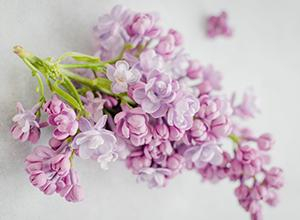Autism and disability: "At the core of me, there is only light and love."
Published May 2, 2025 • By Somya Pokharna
Brenna Ann is a neurodivergent and disabled artist whose story radiates light and love through every word. Living with Ehlers-Danlos Syndrome (EDS), cervical instability, adenomyosis, and other chronic conditions, they have faced many challenges, not just from their body but from a world shaped by ableism and medical gaslighting.
In this interview, Brenna opens up about the painful journey toward diagnosis, the emotional toll of being dismissed by over two dozen doctors, and the deeply upsetting and isolating experience of being spoken to in babytalk, rather than being heard as an expert on their own body.
The support of other disabled and autistic people has been one of the cornerstones of their survival and healing, offering not only solidarity but actual guidance when traditional systems failed them.
Keep reading to discover how Brenna has started to rebuild their life, not around what was lost, but around what truly matters, all through the help of their engineering mindset, creative expression, and connection with the disabled and art communities.
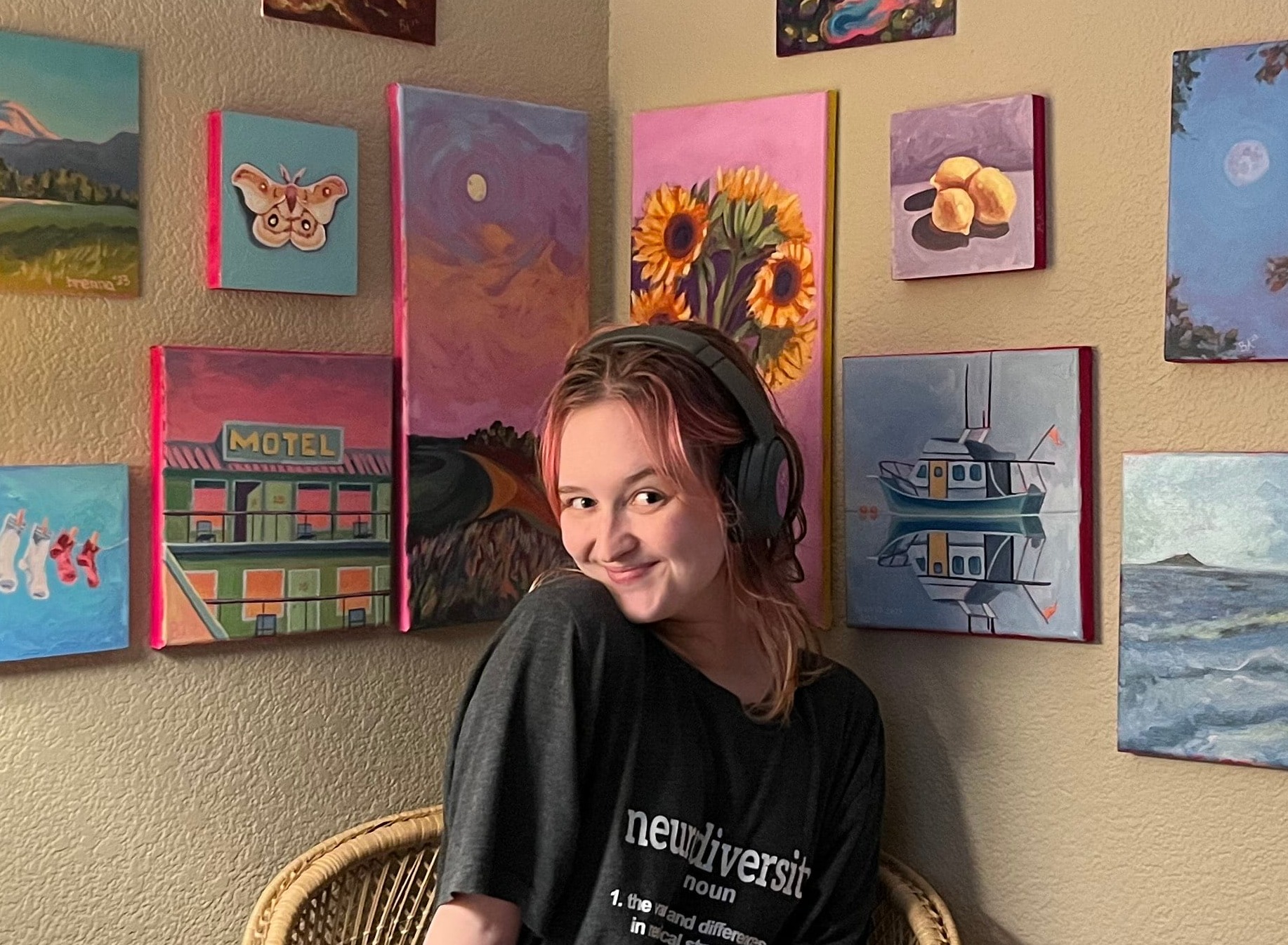
Hello, Brenna! Thank you so much for agreeing to share your story with the Carenity community. We really appreciate it.
Could you start by telling us a bit about yourself? We’d love to hear about your background, passions, and what brings you joy.
Hi! My name is Brenna, I use they/them pronouns because I am a person. I grew up in an isolated and controlling community, so I was only allowed to be what someone else wanted in a child. I was a singer, an artist, a musician, and valedictorian of my 2017 graduating class. I ran cross country, painfully; I got my business management associates, then went to school and got a job in civil engineering (as an assistant). I met my lovely husband, and we hiked and ran together. We got married on top of a mountain. We were what everyone would call “successful.”
Then, in August 2021, one month after I got married to my husband, and the same month I turned 22, I went to the hospital for the worst pain of my entire life and then that pain just didn't go away. Ever.
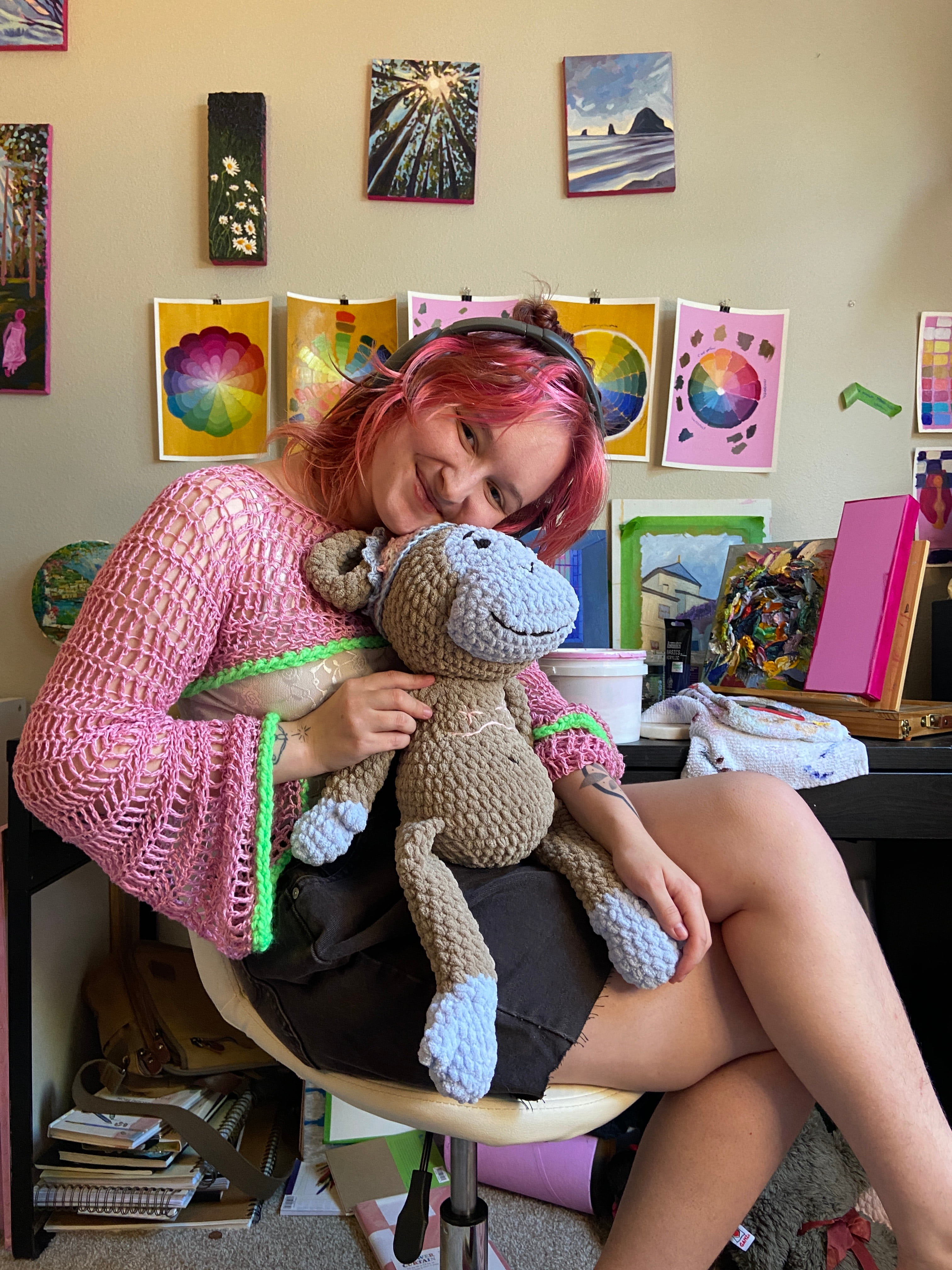 Photo courtesy of Brenna Ann
Photo courtesy of Brenna Ann
Can you share a bit about your journey with Ehlers-Danlos syndrome, cervical instability, and adenomyosis? How did you first realize something was going on with your health?
I wasn't allowed to think anything was wrong with me because of the fundamentalist beliefs my community was under. Every time I had symptoms, I was forced to hide them and was not allowed medication or healthcare. I have always begged for it, but I wasn't able to get healthcare until I got out of that community.
Unfortunately, I had just married my husband 6 weeks prior to my hospital visit and becoming bedridden. I didn't have health insurance (because I was taken off once I became disabled, even though I wasn't 26 yet), and he didn't have coverage for me. So, I was forced to lose everything and just slowly wait until I could get care. My husband went into the Air Force, largely to get me onto healthcare, so then I was doing it completely alone. In an apartment with my cat. Bedridden, going blind, dragging myself to the bathroom on the floor. I didn't get to find out something was going wrong. It hit me like a truck that kept hitting me. But when I went to the doctor, they told me I was fine, and I must be just… really mentally ill. Which I was, from being in so much pain constantly while being ignored. I had always thought that my community would be the only one to ignore me. That once I finally escaped and made it to a doctor, they would believe me. But they just kept pathologizing and misdiagnosing me.
Things just basically kept piling on while I tried to find treatment for the main thing that was disabling me, which was adenomyosis. Thankfully, I finally got surgery for that on January 7, 2025, so I can finally begin working on all the other conditions to heal!
I have a few more piled on too, but the names don't matter as much to me. The title I like is “autistic and disabled.”
Managing multiple chronic conditions can be incredibly challenging. What are some accommodations or tools that have helped you live your daily life more comfortably?
The best accommodations and tools were finding other disabled people to do it with. That is, people who know what to do. Those who have been through it before. Every person needs different accommodations, and I honestly need different accommodations every day. So, finding other people to pass information back and forth is key. The support people I live with are also disabled, and so are the care people I hire to come and help us. Supporting other disabled people and being supported by them is life-changing in the journey.
For me personally, my rollator/transport chair combo is my best accommodation. It allows me to cook, get around my house, get to the doctor, and every once in a while, be pushed around for fun things. It keeps me walking but has an option for it to turn into a wheelchair, so I don't have to be afraid of getting stranded somewhere because I can't walk.
But compression socks, additional salt, IV hydration, certain medications and treatments, and lifestyle changes have all helped me as well.
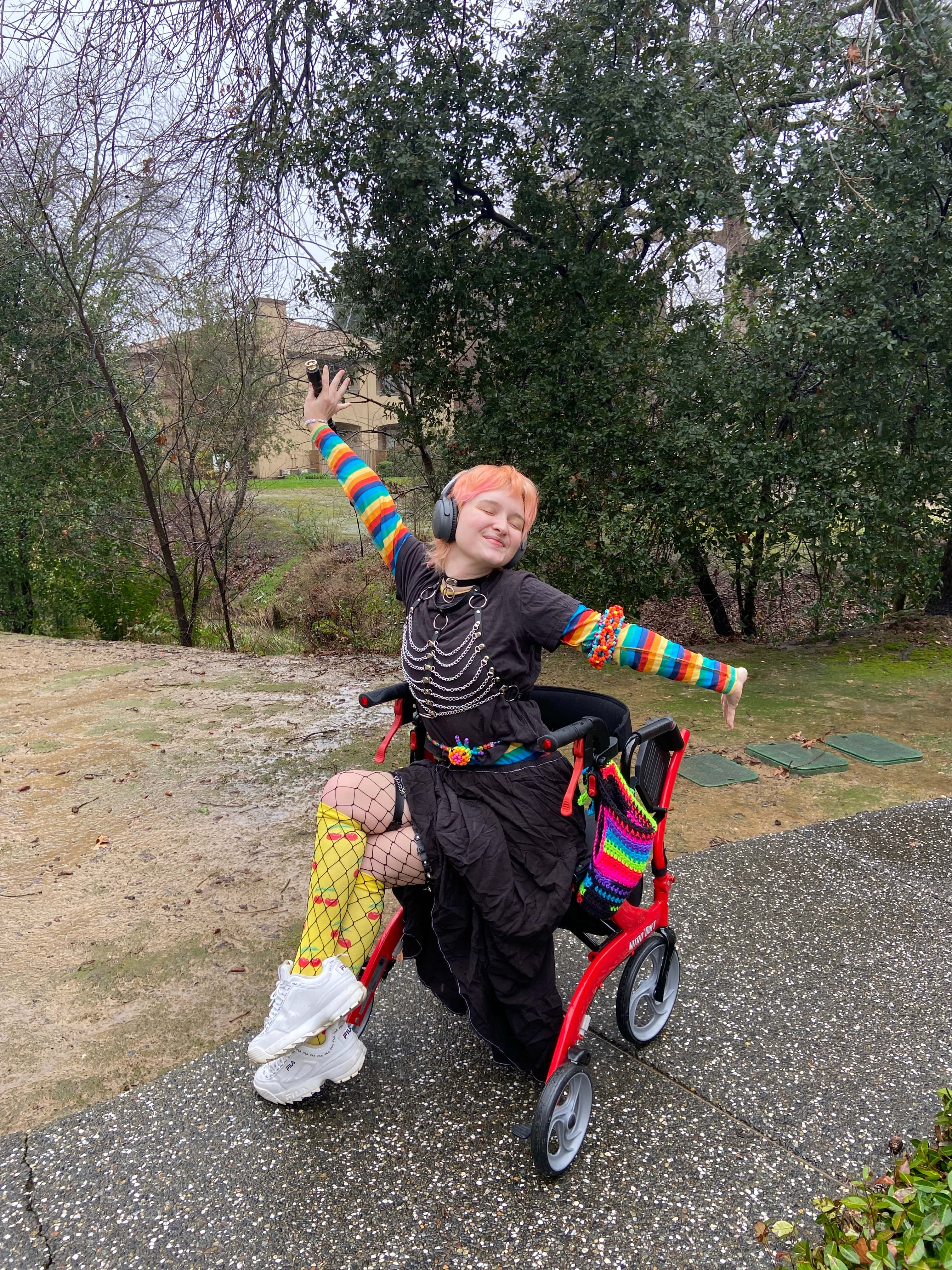 Photo courtesy of Brenna Ann
Photo courtesy of Brenna Ann
Many people with chronic illnesses struggle with being believed by doctors and others. Have you faced this, and if so, how did you advocate for yourself?
Absolutely. And to be quite frank, I couldn't advocate for myself. I have experienced such extreme discrimination that I now have medical PTSD and sob in the car before every appointment, and sometimes my body refuses to exit the car to go in. I saw 25 doctors before a single one gave me any treatment, and it was 3.5 years before I got the treatment I needed for over a decade. I lost everything, including the ability to advocate for myself. My voice. The thing that saved me was other people in my community believing in me and being my voice for me at appointments and at hospital visits. I couldn't speak for myself. At all.
You’ve shared that you're neurodivergent. How does it shape the way you experience and manage your health journey?
For me, autism and monotropism affects me in every way. But I didn't find out the structure of my brain is different until I was already completely bedridden and lost everything else.
Before my disability took my job, I was a civil engineering assistant for 4.5 years, working on residential projects. I view all of my disabilities through the lens of structural engineering. For my brain, I don't lose any pathways. I keep them all. This means my brain feels so full, like a computer with millions of tabs open. Some things will run slowly. However, I am such a wellspring of information that the structural integrity of the information I give is incredibly strong and usually correct. My husband likes to ask, “How do you always know what to say?” or “How are you always right?”
But it's because my brain retains things forever. I just cannot access all those parts of my brain until I have proper care and support, and I didn't for a long time. Now that I am supported by a community, I can properly run this computer inside my brain and return to my career and my job.
I use structural engineering with my physical disabilities too. My genetic disability, Ehlers-Danlos syndromes (EDS), is all about the soft tissue structure of my body, and that's how I was able to find the things wrong with my body, the same way I found weak points in a structure at work.
Autism makes everything connect for me. That's what monotropism means to me. My engineering, my art, my autism, my other disabilities, my past, my future. So now that I hold the information about my disabilities, I can connect every other part of my life that for so long felt so shattered.
Finding out who I am saved me, because it showed me a mirror to myself for the first time. I had been looking at other people trying to copy them instead of someone ever showing me myself, and that it is beautiful. So being neurodivergent shaped me, but finding out I was neurodivergent saved me, and then finding other neurodivergent people to love me for who I am, gave me a whole new life.
What are some ways that people around you, like friends, family, or even medical professionals, can better support autistic individuals dealing with chronic illness?
Just listen to us. Man, 25 doctors told me I was wrong about MY OWN body, and I spent 3.5 years asking for the same treatment. I recently got the surgery I needed since I was young, and finally I can think and feel and exist again. Just hear us. We know ourselves. We are capable, even if we are not capable of speaking. That's the least of my worries, my ability to properly communicate. I only can right now because I have written everything down. But if this was a stressful situation like a doctor's office, sometimes I cannot even read it, so I hand this to a caretaker. That doesn't take away how much I know exactly what is going on in my own body.
You’re a talented artist and creator! How has your art and content creation helped you process or express your experiences with disability?
I would say it's sometimes the other way around. I struggled to find my footing as an artist before I became disabled. I didn't know who I was; I felt disconnected to myself. But then with my disability, it stripped me down to all I was left. And at the core of me there is only light and love. So those things, and the disabled community of love, those are what dictated my artistic experiences.
The parts about disability that are difficult to process are other people being mean. Art helps me grow and bloom. Those difficult-to-process moments just make me sleep.
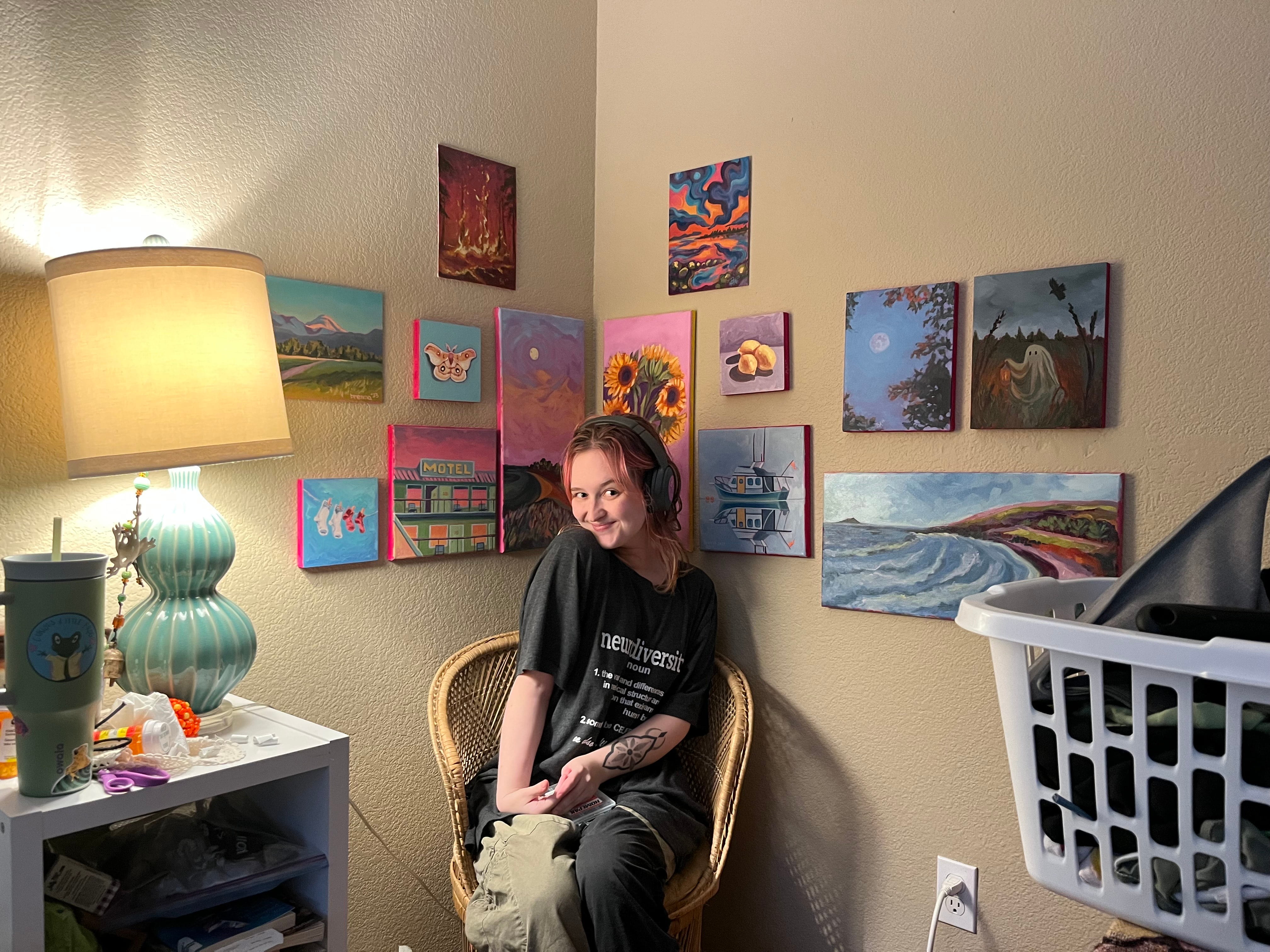 Photo courtesy of Brenna Ann
Photo courtesy of Brenna Ann
Are there any particular themes or messages in your artwork that you hope to convey to the world, especially about disability and chronic illness?
All of my art is from an autistic, disabled lens. I cannot separate myself from those parts of me. They are my core. They are me. My art wants to show that there is as much beauty in disability as in non-disabled bodies. Maybe even more, because of the ways we are creative in our own bodies. The creativity we are forced to have to survive, that's what I want to show the world, on behalf of the entire disabled community, not just me.
What advice would you give to other young people navigating chronic illness, especially those who might feel alone in their journey?
Although you feel alone, because the people in your life now cannot see your pain, it doesn't mean you will always be alone. Building a community of other disabled people, to learn how to be a disabled person (since nobody teaches us how), that is the important part. Real community. True belonging.
A big thank you to Brenna Ann for this interview!
Don’t forget to check out their Instagram account and Youtube channel.
Did you find this interview helpful?
Give it a “Like” and share your thoughts and questions with the community in the comments below.
Take care of yourself!
Comments
You will also like

Adenomyosis and Fibromyalgia: "I just couldn’t face being told “everything is fine” or “normal” again!"
Jun 21, 2023

 Facebook
Facebook Twitter
Twitter
